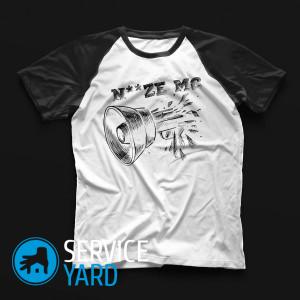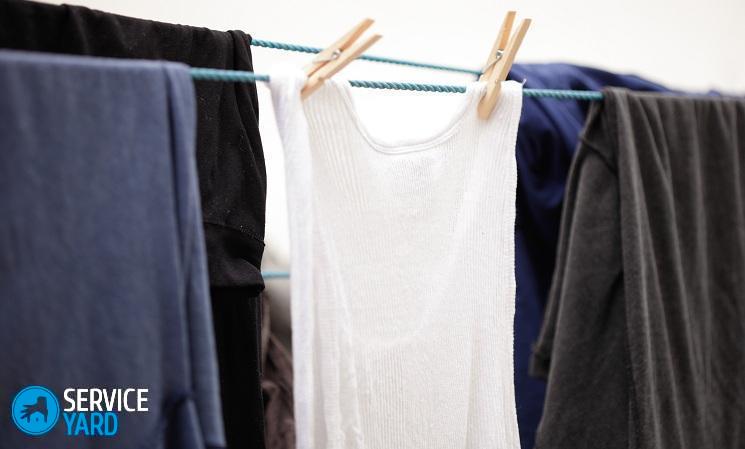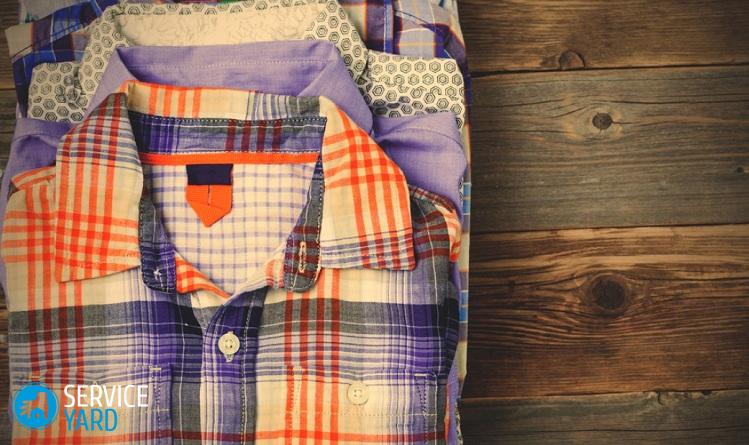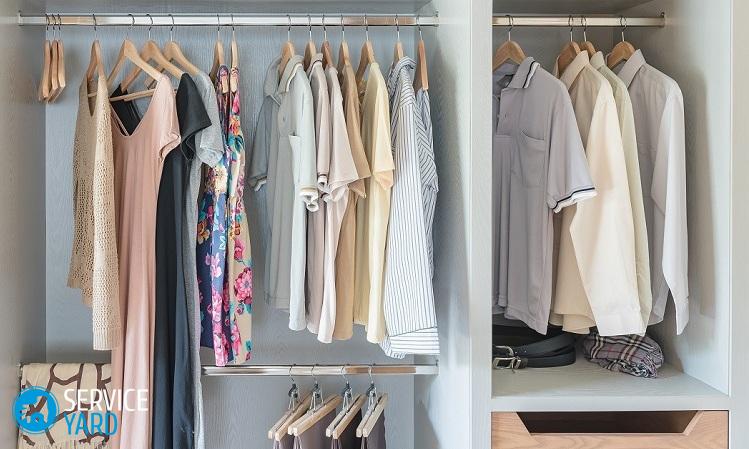How to remove mold from clothes?

A situation where a disgusting green or black mold spot appeared on a beloved and seemingly carefully ironed blouse, many faced. The clothes seem hopelessly spoiled, and the hostess puzzles where this scam came from. Is everything so bad? Spots, of course, are an unpleasant thing, and the fungus also corrodes the tissue. But do not get upset. More often than not, they manage to cope with this disaster. How to remove mold from clothes? Let's discuss it.
to contents ↑What is mold?
Mold is just a fungus. Accordingly, she just loves heat and moisture, she feels especially well in closed spaces, where there is either no fresh air or it is not enough.
Mold happens:
- black
- green.
If you notice at least a small speck, try to get rid of it as soon as possible, otherwise - soon the fabric will begin to rot, holes will appear at the spot. The fungus itself, having felt freedom, will quickly move to other things lying on the same shelf, or even on neighboring ones.
to contents ↑Important! If there are only spots on the product and there are no holes yet, do not rush to throw it away, it is quite possible that you will be able to remove the mold from the clothes.
Causes of mold
Mold does not at all indicate that the mistress is a slut, and does not at all follow her things. Oddly enough, very neat people are often faced with a similar phenomenon, accustomed to storing clothes in special covers.
Important! Covers for suits are sometimes made of polyethylene, and this almost with a guarantee leads to the multiplication of the fungus.
The main reasons are the following:
- violation of the drying regime;
- storage of clothes in a damp and warm room;
- the appearance of fungus on any thing located in the same closet.
Drying mode
You should not think that if you carefully ironed a thing, mold will never settle on it. This can happen if the clothes immediately after ironing are placed in a closet where spores accidentally get into. It’s so easy to not get rid of moisture, which always remains in the tissues for some time after washing and drying. The most reliable option is to wait a couple of hours, and only then put the clothes in the closet.
Molds can also be coated on products that take too long to dry. This often happens in winter, when things are dried on a glazed, but not particularly warm loggia. Moisture is not removed in a timely manner, do not have time to look around - spots have already appeared.
Important! If you do not use the drying mode, you need to dry clothes in a warm, but well-ventilated room.
Storage Violation
The cabinet must be dry! Just as dry should be the covers for storing suits. As for heat, of course, you should not keep clothes in the refrigerator, but in a relatively cool, dry room there is much less chance of getting an unpleasant fungus than in warm and damp.
Important! The air in the room should not be too humid.
Infectious disease
Mold reproduces simply amazingly. It is worth bringing disputes with some not very clean thing, as already on everything that lay in the closet - from the front-dress suit to the pillowcase, spots appeared.And the reason is a towel that hung for a long time in an unventilated loggia, which, due to a master's oversight, turned out to be with other linen.
Such accidents should not be. Never store dirty things with clean ones. This is both unpleasant and unhygienic.
to contents ↑Important! If, nevertheless, an object affected by the fungus is found, immediately remove it from the cabinet, and arrange things in the neighborhood “quarantine” - carefully inspect them and organize a preventive wash with thorough drying.
Get rid of adversity
First, measure the size of the disaster. You need to know:
- how much tissue is affected;
- what kind of fabric;
- persistent or not used dye.
Means choose on the basis of this. They are quite simple, and much of what may be useful to you is most likely at hand. First you need to see if the fibers are intact or not. Mold perfectly eats them, so it may turn out that washing is already useless.
Types of Tissues
If you notice mold stains on clothes - how to remove them will tell you the composition of the material. Mold can affect any tissue:
- cotton;
- linen;
- Woolen
- silk;
- synthetic;
- mixed.
Important! Synthetics are less susceptible to fungus than natural materials, and getting rid of it can be easier. Before trying to remove mold from clothing, think that not all substances are equally well suited for different fabrics.
Dyes
Some products can be used to process both white and colored fabrics. And the colored materials themselves are differently related to not too delicate substances.
to contents ↑Important! For example, kapron or avisent can be processed with hydrogen peroxide, but printed chintz is not worth it, because the peroxide “eats” an unstable dye.
White things with green spots.
How to remove mold stains from white clothes at home? Snow-white things are easier and harder to handle than others. It is difficult to deal with them, because any, even the smallest, speck will be perfectly noticeable. It’s simpler - because you can use almost all means, including those that are not suitable for colored fabrics.
To get rid of the fungus that settled on a white dress, fit:
- bleaches;
- detergents with antifungal components;
- laundry soap;
- a piece of chalk;
- turpentine;
- onion;
- baking soda;
- vitamin C;
- salt;
- lemon juice;
- ammonia.
A bit about store tools
Detergent manufacturers seek to address all the problems their customers may face. Mold stains are not at all as rare as they might seem. Therefore, special powders, liquids and gels to remove such contaminants are on sale, and in a reputable store with a large assortment you will surely find them.
However, it is necessary to find several points in the annotation:
- What type of washing is this product intended for.
- For which tissues should it be used.
- Can I use it for white, black or colored things.
Bleach
To remove mold stains on white clothing made from natural fabrics, any bleach is suitable. For example, a fairly well-known and very cheap tool "White". Its use involves boiling, therefore, it can only be processed with materials that are not harmful to such treatment:
- cotton;
- linen.
The instruction is on the package, but it should be borne in mind that when boiling, the thing should be completely covered with water with bleach. It is enough to boil the product for 10-15 minutes (from the moment of boiling), and the harmful spots will disappear.
to contents ↑Important! Synthetic things cannot be boiled - just like wool and silk, so this method is not suitable for them.
Why is chalk needed?
If the fabric does not withstand boiling, but it can be ironed with a hot iron (in addition to cotton and linen, some mixed materials and even synthetic ones - if the label has the appropriate marking) - a method with chalk or tooth powder is suitable.
Chalk is a great absorbent, so it simply absorbs what is not needed:
- Pound white chalk.
- Spread the product on the table so that the stain is on top.
- Fill the spot with chalk.
- Cover it with a sheet of white paper (such as office paper).
- Iron the sheet for a quarter hour with a hot iron.
Hydrogen peroxide
This product, which can be bought in a pharmacy, copes with mold on white fabrics of any kind, as well as on some colored synthetic ones, if a persistent dye was used in their manufacture:
- Pour peroxide stain.
- Wait half an hour.
- Wash a thing.
to contents ↑Important! Before using hydrogen peroxide to process color synthetics, check to see if the item will discolor (just a couple of drops in some inconspicuous area).
Onion
This way you can remove mold stains on white and colored clothes. The disadvantage of such an affordable, very cheap and very effective means is only one - the thing then has to be washed with perfume powder. Although some people like the smell of onions, so this is not necessary.
Option 1
To make a universal product you will need:
- 1 large onion;
- saucer;
- a blender or meat grinder;
- piece of wide bandage.
To begin with, the bulb must, of course, be peeled. The husk can be folded into a jar - it is useful, for example, for dyeing fabrics or Easter eggs.
Then you need to act like this:
- Cut the onion into 4-6 parts.
- Scroll it through a meat grinder or grind it with a blender.
- Put the gruel in a piece of bandage folded several times.
- Squeeze the juice on the stain.
- Wait half an hour.
- Wash clothes.
Important! This method is good if the clothes have not yet begun to rot.
Option 2
In this case, not pulp is used, but pulp. The tool is prepared in the same way as in the first case, but nothing needs to be wrung out. It is necessary to spread onion gruel on the stain, wait half an hour or forty minutes, rinse with water and wash the product.
Option 3
To remove mold from clothes, you can mix onion gruel with lemon juice - this will enhance the effect. With the onion, we do the same as in the first two cases. Squeeze the juice of one lemon into the pulp, add the zest passed through the meat grinder there. After processing, the product must be washed, adding a little more powder and conditioner than usual.
to contents ↑Yogurt will help you out
An old way to combat mold on linen is yogurt or kefir.
Important! They themselves are obtained as a result of exposure to a fungus. This fungus conflicts with mold, and simply put, it eats it.
The method of action is simple:
- Lay out the clothes so that the stain is on top.
- Fill the stain with yogurt.
- Wait half an hour.
- Put the product in the wash.
Laundry soap
"Grandmother's" means, but very simple and effective.
Important! It is absolutely suitable for any fabrics, it does not “eat” dye, it does not destroy fibers - in a word, it has no price.
To remove mold from clothing, you will need:
- pelvis;
- laundry soap;
- warm water.
The rest is simple:
- Pour enough warm water into the basin so that the item is completely immersed in it.
- Dissolve the soap to get a concentrated soap solution (you can pre-rub the soap on a coarse grater).
- Abundantly soap the stain.
- Soak the item in soapy water.
- Wait half an hour.
- If necessary, repeat the procedure.
Ammonia
Truly a universal tool that is ideal for removing mold from colored fabrics, including printed cotton:
- Moisten the stain thoroughly with ammonia.
- Wait 10-15 minutes.
- Rinse the product.
- Wash it.
Cosmetic clay
This method is more suitable for colored fabrics than for white:
- Place the product on the ironing board with the spot up.
- Drizzle the stain with turpentine.
- Sprinkle it with cosmetic clay.
- Cover with a blank sheet of white paper.
- Iron with iron for 5 minutes.
- Remove the clay.
- Wash a thing.
to contents ↑Important! For white things, you can use only well-purified turpentine, otherwise - yellowish spots may appear. If this is exactly what happened to you when you tried to remove mold from your clothes, remove them with alcohol.
Method for delicate fabrics
If the product can neither be ironed with a hot iron, nor washed in normal mode, nor even boiled, you can try to remove the mold with the following mixture. You need:
- 100 g of milk;
- 100 g of borax;
- some table vinegar;
- juice of 1 lemon;
- cling film;
- cotton pads.
What to do with all this:
- Mix milk and borax, add a few drops of vinegar and lemon juice, and prepare a homogeneous mass.
- Fold out the product.
- Smear the stains with the resulting composition.
- Cover them with cling film.
- Wait 45 minutes.
- Remove the composition with cotton pads.
- Wash the product by hand.
Vinegar and Glycerin
Table vinegar does a great job of mold. To prepare the solution you will still need:
- glycerol;
- warm water;
- cling film.
How to remove mold stains from clothes:
- For 1 liter of water, take 50 ml of food vinegar (9%) or 150 ml if the concentration is 3%.
- Add 25 ml of glycerin.
- Place the product in a container so that it is completely immersed in water.
- Wrap the container with cling film or close the lid tightly.
- Wait 25-30 minutes
- Wash a thing.
to contents ↑Important! The product does not have to be soaked in vinegar, only stains can be treated with this solution, but then you need to increase the time to 45 minutes.
Vitamin C
To remove mold from clothing, an ordinary ascorbicum will do. Dissolve 2-3 tablets in 100 g of alcohol - this is the solution. Process the stain, allow to dry and send the item to the wash.
to contents ↑Important! Instead of alcohol, you can use vodka or another strong, but colorless alcoholic drink.
Soda
Baking soda removes mold stains from any type of tissue. It does not affect the color in any way, so even chintz can be safely treated with it. It is enough to cook a thick slurry, apply it to the stain and hold until dry, and then remove the soda with a small brush.
to contents ↑Preventive measures
Like any disease, a fungal infection is easier to prevent than to treat. To keep your clothes safe and sound, do not let the fungus multiply:
- Only clean items should be stored in the closet, avoiding proximity to those where mold spores can be.
- Outerwear should be properly ventilated in the open air before being put into the closet for the summer.
- Only absolutely dry things can be stored.
- In the closet it is necessary to do a general cleaning at least a couple of times a year and ventilate all the clothes.
- The wardrobe should not stand close to the wall - this prevents proper air circulation. Leave a clearance of at least 10 cm.
- Special moisture-absorbing bags that can be used to transfer clothes and linen are very helpful.
- Do not store clothes in the bathroom.
Stock footage
Now you are fully prepared for the upcoming fight against fungus. Do not hesitate, act in one of the ways proposed above, and then neither mold nor smell will remain from the mold.
- How to choose a vacuum cleaner taking into account the characteristics of the house and coatings?
- What to look for when choosing a water delivery
- How to quickly create comfort at home - tips for housewives
- How to choose the perfect TV - useful tips
- What to look for when choosing blinds
- What should be running shoes?
- What useful things can you buy in a hardware store
- Iphone 11 pro max review
- Than iPhone is better than Android smartphones






